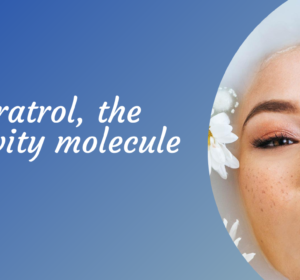Ready to dive into the world of skin exfoliation? We’re about to embark on a journey to uncover all the secrets of achieving that so-smooth and radiant complexion. Whether you’re a skincare newbie or a seasoned pro, exfoliation is a game-changer you won’t want to miss out on. So, grab your favourite mug of something warm, get cosy, and let’s chat about why skin exfoliation is the ultimate skincare step for that lit-from-within glow. Trust us, your skin will thank you
Originally posted November 15, 2020.
What is skin exfoliation?
Exfoliation is like hitting the reset button for your skin. It’s the process of removing dead skin cells from the surface of your skin, revealing the fresh, vibrant skin underneath. Think of it as a gentle scrub that buffs away dullness, leaving you with a smoother, brighter complexion. Whether you exfoliate with a scrub, a chemical exfoliant, or even a tool like a brush or sponge, the goal is the same: to slough off those old, tired cells and make way for the new ones to shine.
When we exfoliate our skin, we are removing the cells from the outer skin layer. Our body renews our cells every 28 days as part of a natural process. Dead cells can accumulate on our skin, giving it a dull, non-uniform appearance. Dead cells can clog the pores as well. Exfoliation helps with this renewal process, which becomes slower as we age.
Exfoliation is a very old process; people from ancient civilizations already exfoliated their skin without knowing the process. It is well known that Cleopatra, the Egyptian queen, used to get a bath in milk. We know now that milk contains lactic acid, which is one of the most popular chemical exfoliators.
Women from other civilizations used to scrub their skin with powder made from grounded alabaster stone, doing what we know today as physical exfoliation.
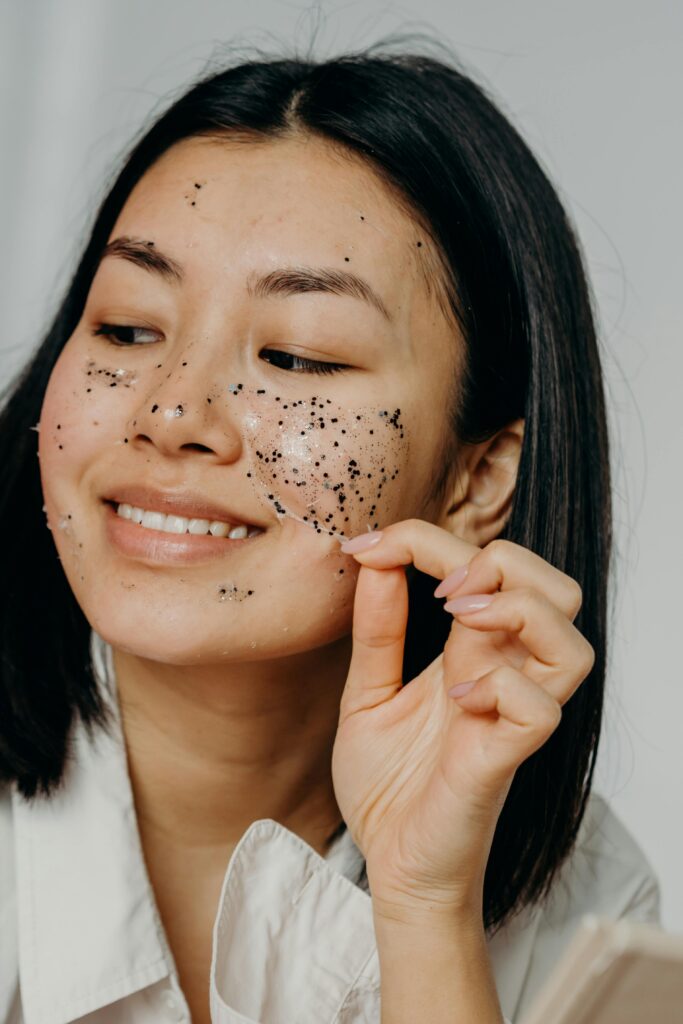
What are the main benefits of skin exfoliation?
- Removes dead cells and impurities
- Improves cell regeneration
- Improves the absorption of cosmetics
- Reduces the appearance of wrinkles and fine lines
- Stimulates blood circulation
- Prevents blackheads and pimples
- Improves skin capacity to retain water
- Stimulates collagen and elastin production

Types of Skin Exfoliation
Physical Skin Exfoliation
Physical exfoliation makes use of particles contained in some creams, pumice stones, konjac sponges, or anything else that can produce some friction on your skin. Rubbing any of the mentioned products on your skin produces friction that removes dead cells and impurities from the external skin layer.
There are a lot of natural physical exfoliators that you can find in your kitchen like salt, sugar, oatmeal, ground fruit stone, etc. Some of the scrubs you find in the market contain these types of particles as an exfoliator. You can also buy synthetic scrubs made with polyethene or nylon particles. They are generating a lot of controversy nowadays, as they are microplastics that generate a lot of pollution when they go through the drain.
Another type of physical exfoliation is the peel-off mask. It is a gel you put on your face and let sit for some time. Once is dried, it forms a film, which you remove from your skin (therefore the name peel-off, you peel the mask off your skin). While doing that, the film brings with it skin dead cells. The main benefit of physical exfoliation is that you get a quick effect, your skin looks uniform and smooth instantaneously.
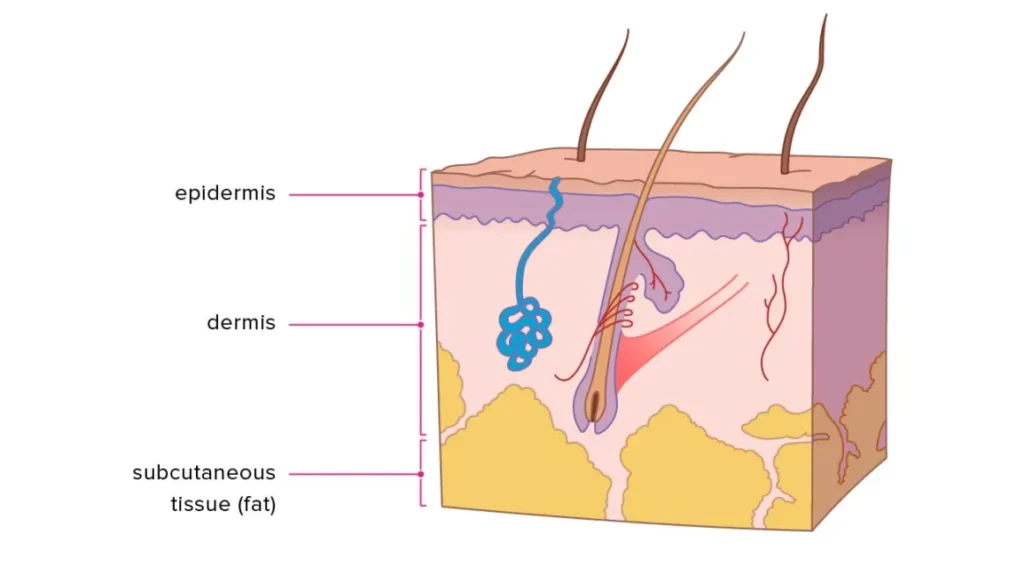
Chemical Skin Exfoliators
Chemical exfoliators contain acids or enzymes in their formula to exfoliate your skin. You don’t need to rub them on your skin, you simply apply and let them do their job. That makes this type of exfoliator good for people with sensitive skin. You can find them as toner, cleanser, serum and other formats.
The advantage of chemical exfoliators is that they act in the deeper layer of the skin and not only in the external one. For the same reason, they can produce irritation and make your skin more sensitive to sun radiation. You should use sunscreen after using chemical exfoliators.
The most common molecules in the chemical exfoliator are hydroxy acids, alpha-hydroxy acid (AHA) and beta-hydroxy acids (BHA). The most popular and effective are glycolic acid, citric acid, lactic acid, and malic acid.
Enzymatic exfoliators are another type of chemical exfoliator. They use enzymes that digest or break the linkage between the dead and live cells in the outer layer of the skin. They come as masks containing natural enzymes from fruit like papaya and grapefruit. Enzymatic scrubs don’t contain particles and are milder than acid-based exfoliators
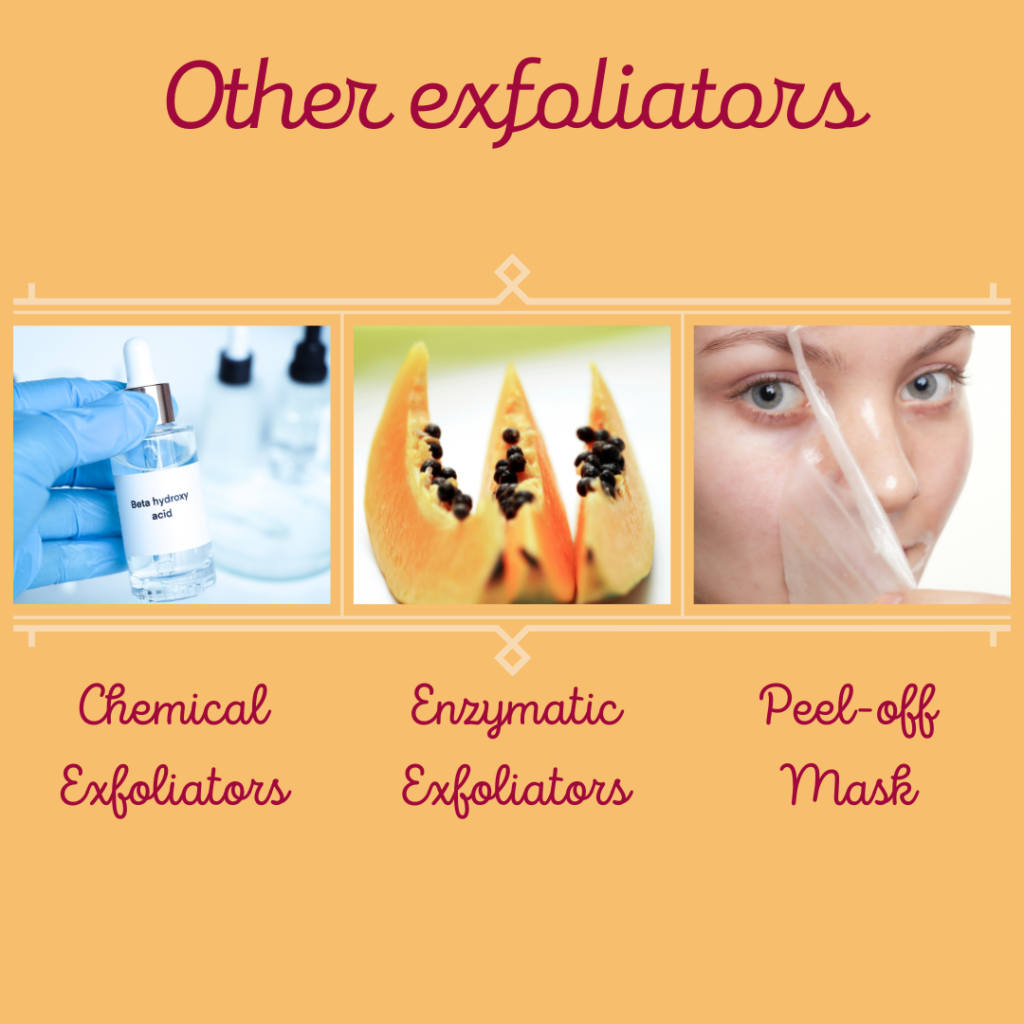
How to exfoliate your skin
That will depend on the type of exfoliator and the particular product you use.
If you are going to do a physical exfoliation, you should take a small amount of product and rub it on your face with a circular massage. You should rinse well after using.
If you are doing chemical or enzymatic exfoliation, you should carefully read the instructions of the product you intend to use. Normally, you should apply the product to the skin, leave it for some time, and finally rinse it. The amount of time you spend on your face will depend on the particular product.
Some general advice to follow if you want to exfoliate your skin is:
- Choose the right exfoliator for your skin type
- Make a patch test before using it for the first time
- Do not apply exfoliator in eyes or mouth areas
- Do not apply exfoliator over damaged skin
- Never use a body exfoliator over your face
- Always use sun protection after exfoliation
The frequency at which you should exfoliate your skin depends on the product you intend to use. Read the instructions carefully for product advice

Which type of skin exfoliation is better for each skin type?
Normal
If you have normal skin you are very lucky. This skin type is neither oily nor dry. One exfoliation per week is enough for normal skin and 5 you can use any type of exfoliator.
Dry
Dry skins have few layers of dead cells and you should exfoliate twice a week with a creamy, soft and hydrating product. If you choose a physical exfoliator, check that the product has small particles.
Combination or Oily
Combination skins have an oily area (the T-zone), while the rest is dry. If you have oily or combination skin, you should exfoliate it three times a week to remove the excess oil from the pores. The ideal exfoliator is a gel product with large particle sizes.
Sensitive
If you have sensitive skin, you also need exfoliation, but very mild exfoliation. You should do at least once a month with a soft product that contains emollients as a part of the formula.
Homemade Exfoliators Recipes
You can make your natural exfoliators at home using the ingredients you have in your kitchen. Follow any of these 5 recipes or make your own.
- Oatmeal Scrub. Mix 2 cups of oatmeal with hot water to get a thick mixture like porridge. Apply it to your face with a circular massage, and rinse with warm water.
- Lemon and sugar scrub. Mix 2 tablespoons of sugar with the juice of half a lemon. Apply with a circular massage over the wet face. Leave for 5 minutes and rinse well.
- Olive Oil and Sugar Scrub. This recipe is for all the body, not just the face. Mix ¼ cup of sugar with 3 tablespoons of olive oil. Apply it to the body with a massage and rinse.
- Chocolate Body Scrub. Mix ¼ cup of grapeseed oil, ½ cup of sugar, and 2 tbsp. of cocoa powder. Mix well and apply over the body with a circular massage. Rinse well.
- Carrot Scrub. Mix the juice of a carrot with your moisturizing cream. Apply it to the face once a week with a circular massage. Carrot has exfoliating and cleansing properties.
My favourite skin exfoliators
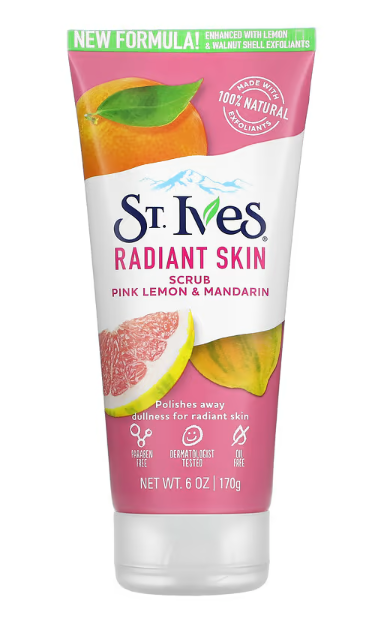
St. Ives, Radiant Skin Scrub, Pink Lemon & Mandarin
This is one of my favourite physical scrubs. It is gentle with my skin and leaves a refreshing feeling. My skin is smooth and the tone is even after using it. You can read the full review of this product.
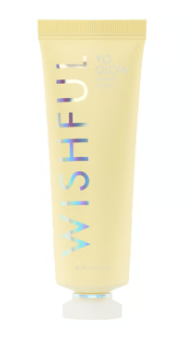
Wishful Yo Glow AHA & BHA Facial Enzyme Scrub
Wishful Enzyme Scrub is one of the best enzymatic scrubs I’ve ever tried. It not only leaves my skin smooth and supple but also has a lovely scent. The only negative point is the price.

The Body Shop Edelweiss Liquid Peel
This product from The Body Shop is a good alternative to the Wishful Scrub at a more affordable price. If you are on a budget this is one of the best options I’ve tried.
In conclusion, exfoliation is an essential step in any skincare routine, offering a multitude of benefits for your skin’s health and appearance. By regularly removing dead skin cells, you can reveal a smoother, brighter complexion and improve the effectiveness of your other skincare products. However, it’s important to exfoliate gently and avoid overdoing it, as excessive exfoliation can lead to irritation and sensitivity. So, find the exfoliation method that works best for your skin type, and incorporate it into your routine to enjoy glowing results. Here’s to happy, healthy skin and a radiant complexion!
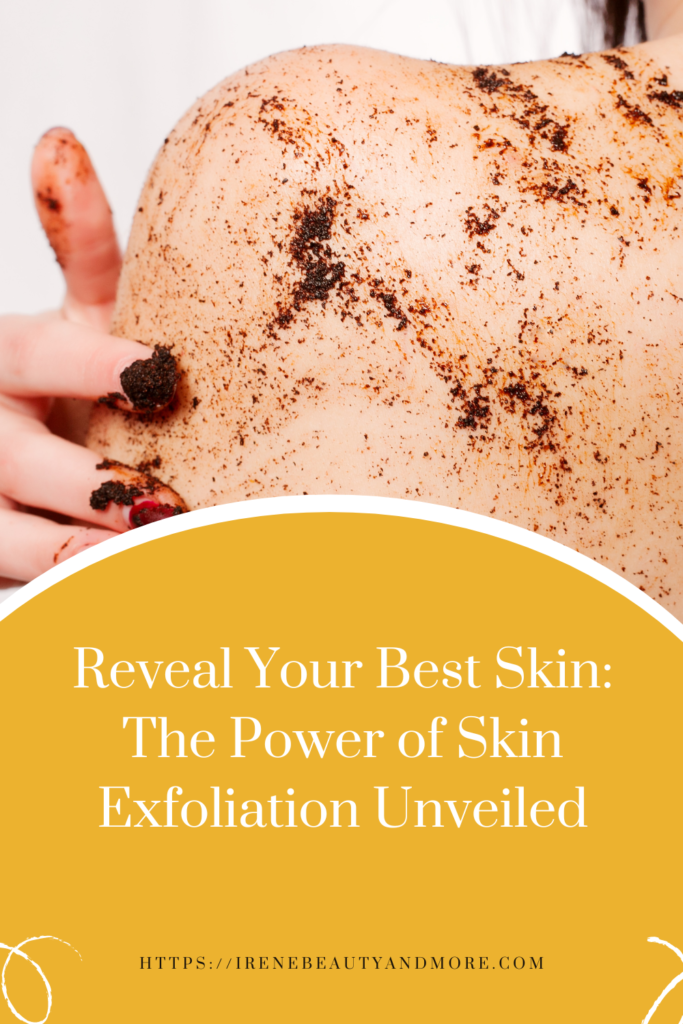
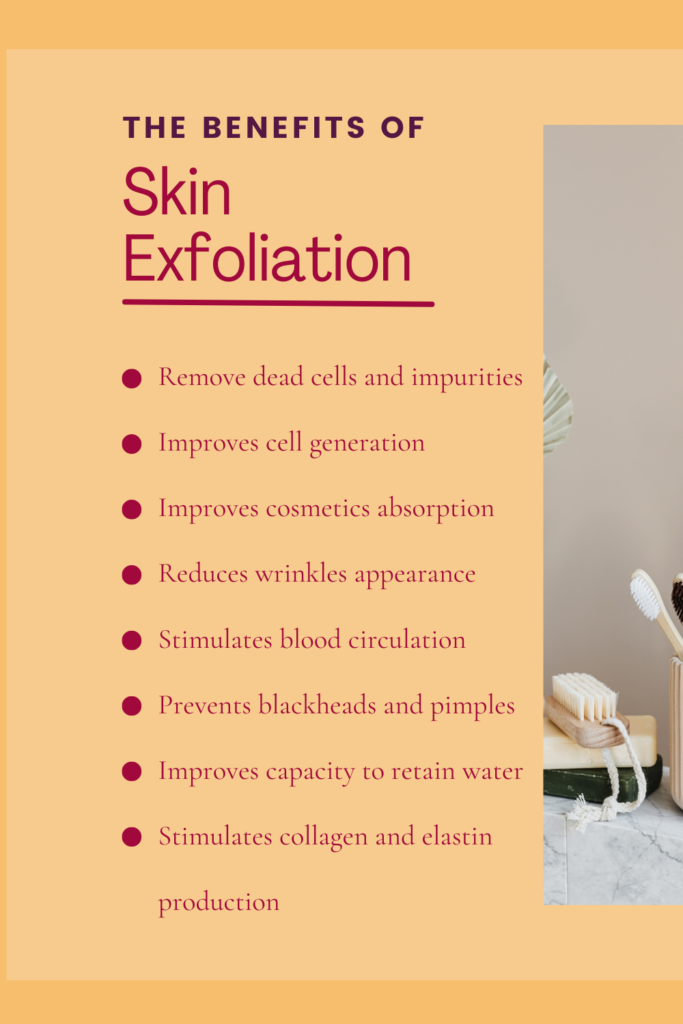
Bear in mind that some of the links in this post are affiliate links and if you go through them to make a purchase I will earn a commission. Keep in mind that I link these companies and their products because of their quality and not because of the commission I receive from your purchases. The decision is yours, and whether or not you decide to buy something is completely up to you.



